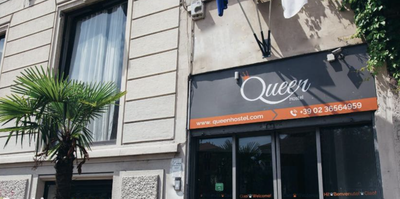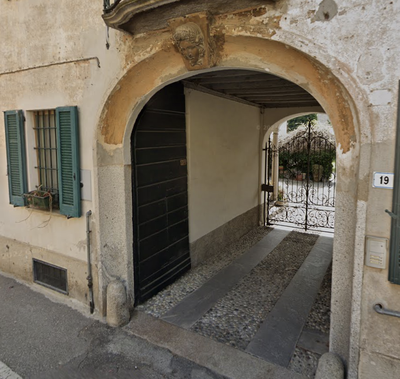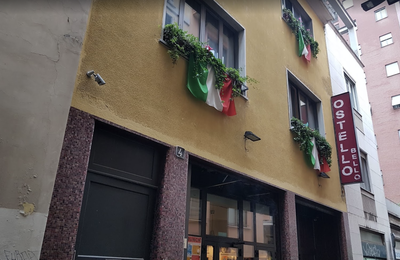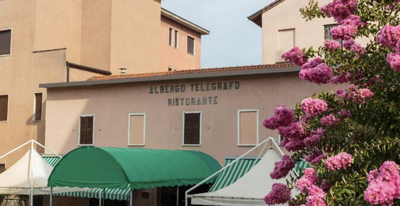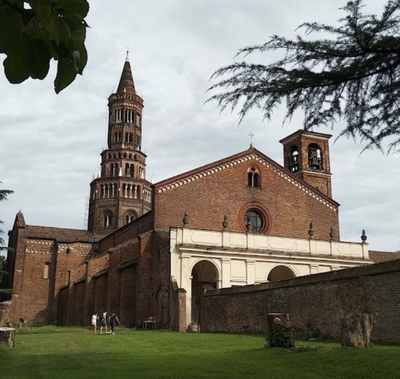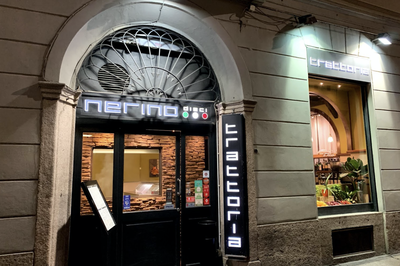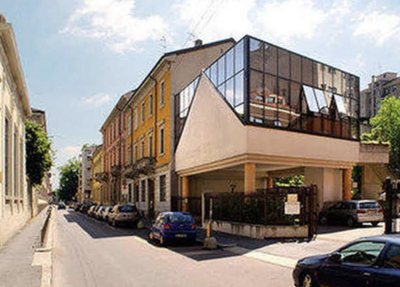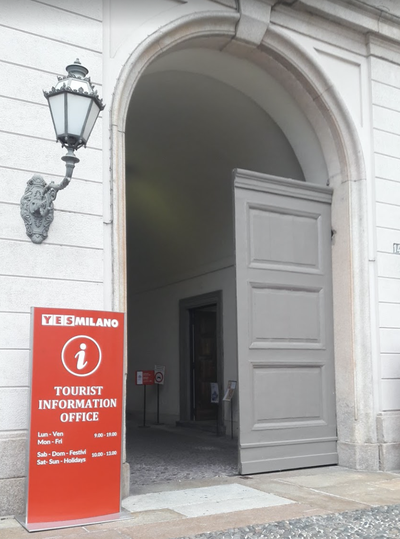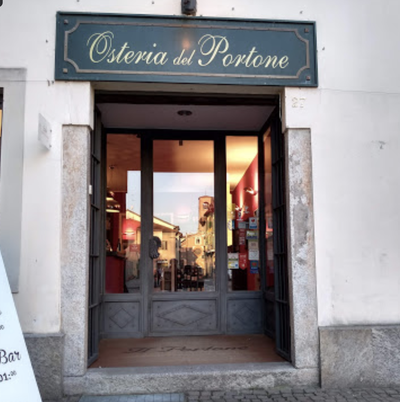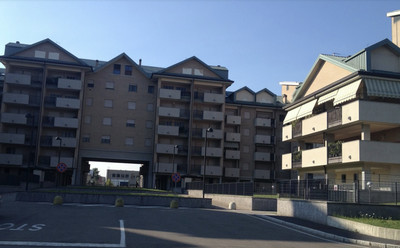Milano to Melagnano
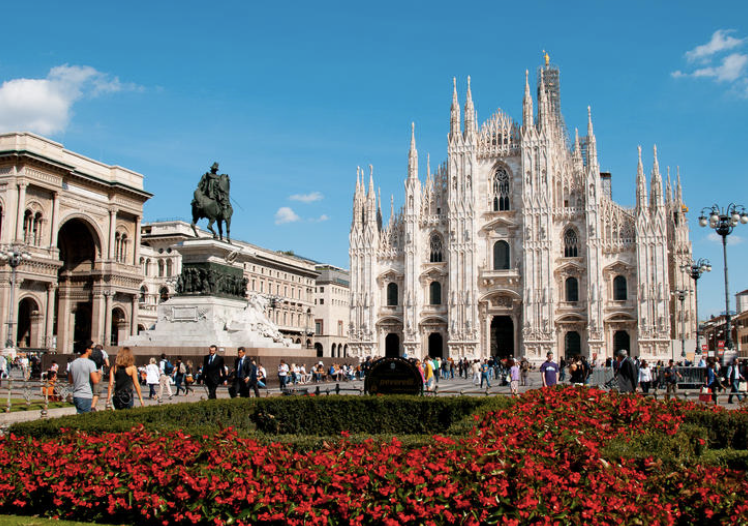
Lombardia
14. Milano to Melagnano
Easy
5h
26,1km
+150m
-193m
Step
Embed this item to access it offline
Gradual exit from a large city to the countryside. From the centre to the outside, this itinerary, mainly in urban areas, allows you to discover the historic heart of Milan, residential areas that are more or less rich depending on the distance from the centre, islands of greenery and calm, commercial and industrial areas in the suburbs, as well as new cities on the periphery. Similarly, this path provides information on all types of arteries (streets, avenues, boulevards, ring roads and highways) that irrigate this megalopolis.
9 points of interest

Milano CulturalBrera Art Gallery
Elegant palace used by Napoleon, with medieval and Renaissance art, especially from northern Italy. Superb museum where it is necessary to count 1h30 of visit. Reservation recommended.
Milano CulturalLa Scala
Sumptuous 18th century theatre, famous for its Italian ballets and operas, with museum and music library.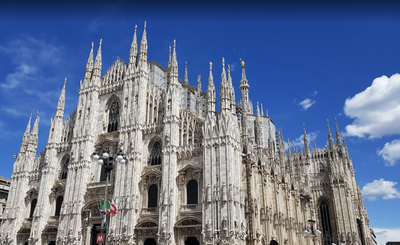
Milano HistoricalMilan Cathedral
One of the largest cathedrals, an emblematic masterpiece that took more than 600 years to build.
Milano HistoricalColumns of San Lorenzo
Roman columns.
Milano CulturalBasilica San Lorenzo Maggiore
In the 4th century, San Lorenzo was located outside the ramparts, not far from the amphitheatre, the imperial palace and the circus, along Via Ticinensis, which linked Pavia to Milan and was the most important access route to the city. For those who arrived in Milan, the Basilica, with its dimensions, was presented as "the most imposing building with central symmetry in the Christian West".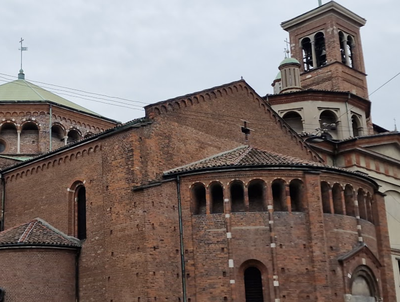 St Columban
St ColumbanBasilica of San Nazaro in Brolo
Also called Santi Apostoli e Nazaro Maggiore, the foundations of this basilica date back to the 4th century, before the passage of Columbus.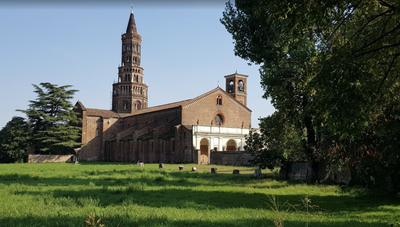
Abbazia Chiaravalle CulturalAbbey of Chiaravalle
The Abbey of Clairvaux (Chiaravalle) was founded in 1135 by Bernard de Clairvaux himself as a descendant of the mother abbey of Clairvaux in France. Completed in 1221, it is one of the first examples of Gothic in Italy.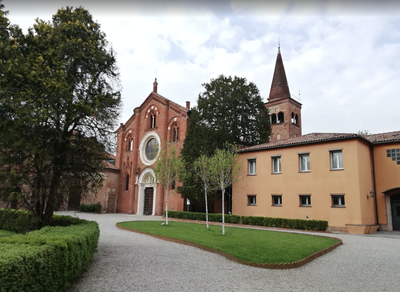
Abbazia Viboldone CulturalAbbey of Viboldone
Oasis of serenity, where a community of Benedictines lives, was founded in 1176. The facade has elements of Romanesque-Lombard and Gothic style (alternating brick and white stone, geminated bays and Lombard strips), with a beautiful Virgin and Child at the portal. Inside there are some remarkable frescoes, including a Virgin and Child with Saints attributed to Michelino da Besozzo (1395). The Last Judgment (1350) is a masterpiece by Giusto de'Menabuoi, a student of Giotto.
Ossario Santa Maria della Neve HistoricalOssuary of Santa Maria della Neve
A small chapel in the middle of the countryside. Next to it is one of the ossuaries from the Battle of Marignano in 1515, which commemorates the 18,000 dead from this battle between the French troops of François 1er and the Swiss troops protecting Lombardy. The ossuary was renovated in 2014 ahead of the 500th anniversary of the battle.
Description
On leaving the Basilica, turn right into Via Fatebenefratelli until you reach a small square on the left opposite Piazza San Marco. At the beginning of the square, marked by a modern stone statue, turn left and then right into the narrow street (vicolo Piero Manzoni):
- Turn left into via Brera, at first a pedestrian street with many restaurant terraces which then opens to traffic (single lane) with wide pavements at the foot of characterful buildings. At the end of this street, continue along via Giuseppe Verdi, which curves to the left and arrives in piazza de la Scala slightly to the right. Cross the piazza diagonally, passing by the Leonardo da Vinci monument, to take the large glass-covered walkway (galleria Vittorio Emanuele II) which leads to the square of the Milan Cathedral.
- After visiting the cathedral, go to the corner of the square to the left of the statue of Vittorio Emanuele II. Cross via Grefici to reach via Torino, which extends the diagonal of the square. Walk down this shopping street with its department stores until you reach its end after a large curve to the right and then to the left. Via Torino ends at a bank (Unicredit): take the street on the left that turns south (Corso de Porta Ticinese). Admire the Roman columns of San Lorenzo and pass the Porta Tinese with its tower. Continue along the same street, now lined with small shops, until you reach the Basilica of Sant'Eustorgio.
- Turn left and follow the pedestrianised Via San Croce until the next intersection with Via Antonio Banfi. Turn right into this street and follow it until you reach Corso Italia, where you turn right and then left after the church of San Celso into Via Aldo Lusardi. At the next intersection with Via Giuseppe Vigonie, turn right and follow this street until you reach Corso di Vigentina. Turn left onto Corso di Vigentina and follow it until you reach the crossroads with Corso di Porta Romana.
- Turn right, pass a first roundabout with Porta Romana and then a second one (Piazzale Lodi) before taking the first street on the right after passing over the railway tracks.
- Turn right into Via Scrivia and then left into Via don Bosco which continues into Via Bessarione. At the end of the road, turn right and then left into Via San Dionigi and follow it to the second roundabout, where you turn right again into Via San Diogini (signposted Cammino di San Colombano). Between the next two bridges, turn left into Parco Vettabia and follow it until you reach Via Sant'Arialdo and then the clearly visible Abbazia di Chiaravalle.
- After the abbey, turn left into Via Sant'Arialdo as far as the cemetery and then turn left onto the main road through the village of Poasco. Pass under the railway line through a tunnel reserved for pedestrians and continue towards the residential village of Sesto Ulteriano, which you pass through until you reach the southern edge after the church and the cemetery. At the second roundabout, turn right to diversions through Ikea to avoid the busy and dangerous direct road. After passing under the motorway, reach a roundabout, take the first road on the right (Via Volturno) and the next on the right (Via Marignano) to reach the Abbazia di Viboldone.
- After the abbey, continue south-east on the road that runs parallel to the motorway and then diverges eastwards to cross the first railway line and the hamlet of Mezzano and then Pedriano.
- After the tunnel under a second railway line, turn right onto Via San Francesco, followed by Via Sandro Pertini, which turns left. At the end of the road, turn right onto Via Monte Grappa, then left onto Via Consiliazone which leads to your destination.
- Departure : Basilica di San Marco, Piazza San Marco 2, 20121 Milano
- Arrival : Basilica Minore San Giovanni Battista, Piazza Risorgimento, 3, 20077 Melegnano
- Towns crossed : Lombardia
Altimetric profile
Transport
Train:
Trenord, Melegnano station,
line 1 connections to Milan
tel. 02-72.49.49, www.trenord.it.
Bus:
Autoguidovie Milano Sudest,
bus line z420 with connections to Milan,
tel. 800-67.88.50, milanosudest@guidovie.it.
Trenord, Melegnano station,
line 1 connections to Milan
tel. 02-72.49.49, www.trenord.it.
Bus:
Autoguidovie Milano Sudest,
bus line z420 with connections to Milan,
tel. 800-67.88.50, milanosudest@guidovie.it.
Report a problem or an error
If you have found an error on this page or if you have noticed any problems during your hike, please report them to us here:
Close by11
- Accommodation
- Information

